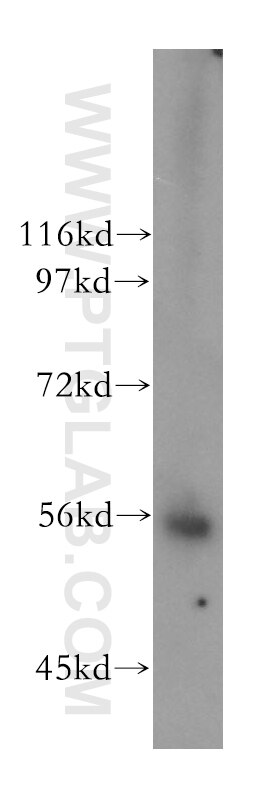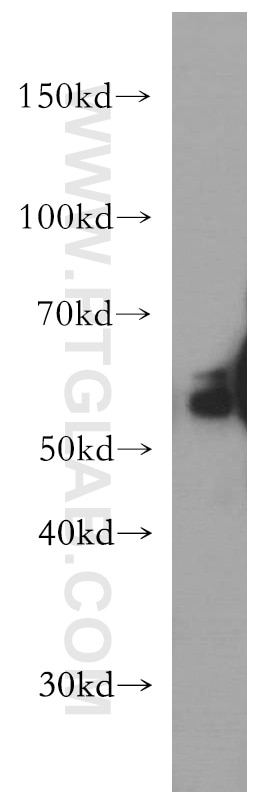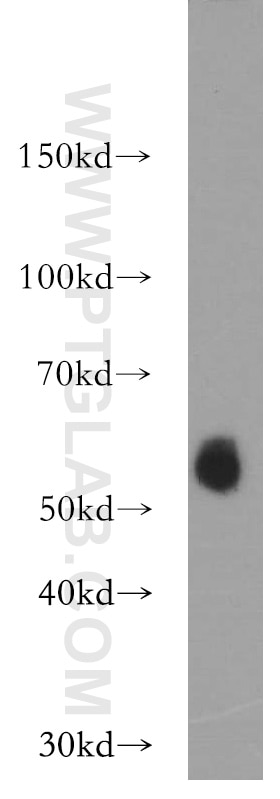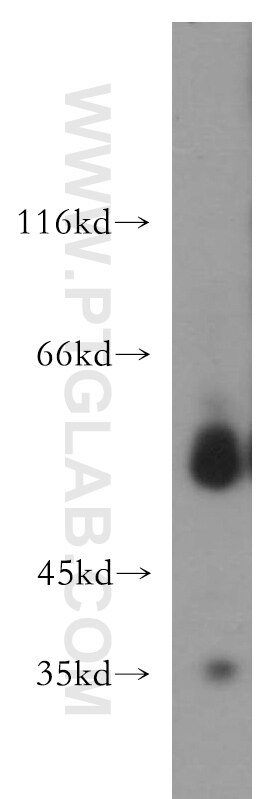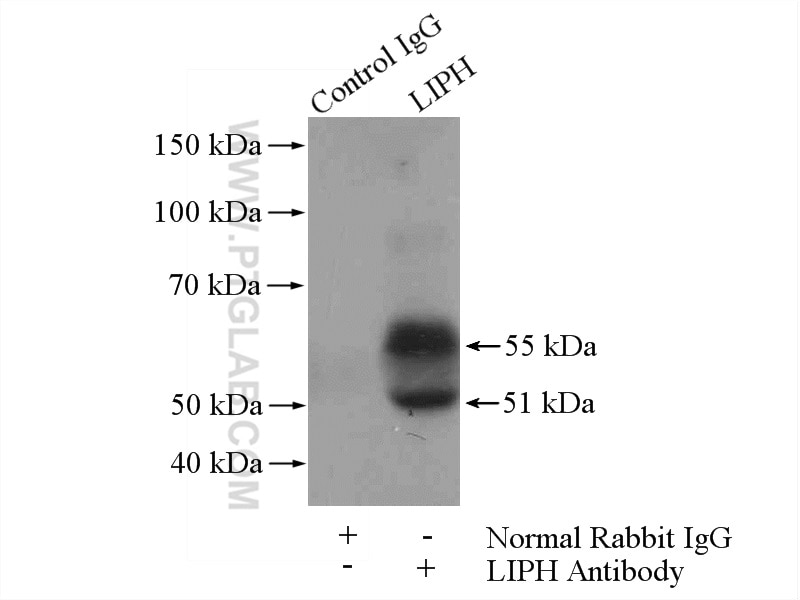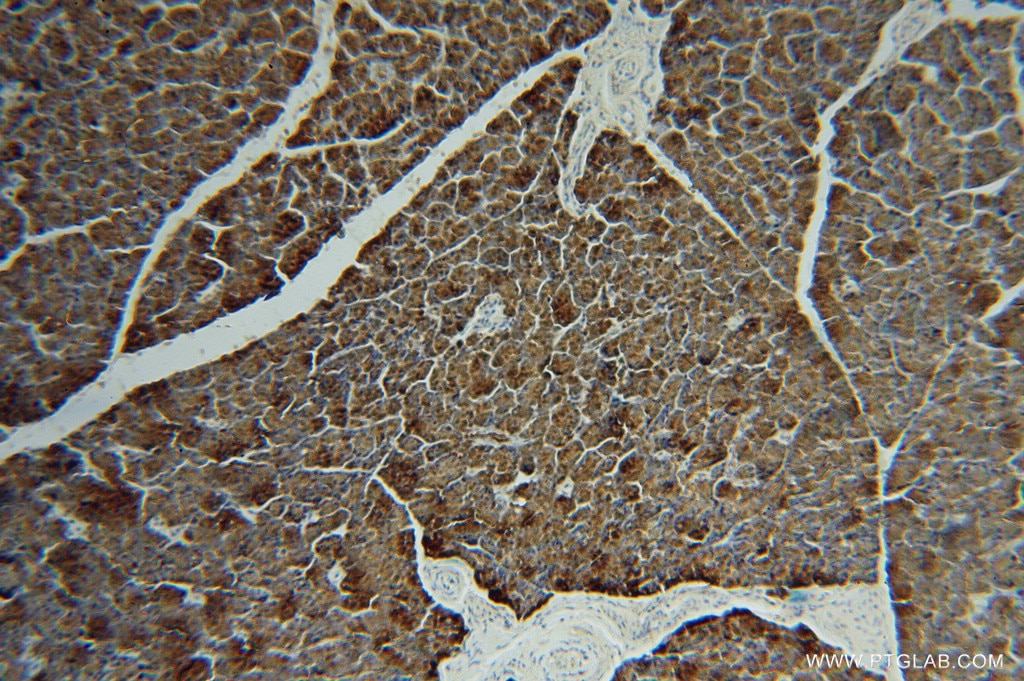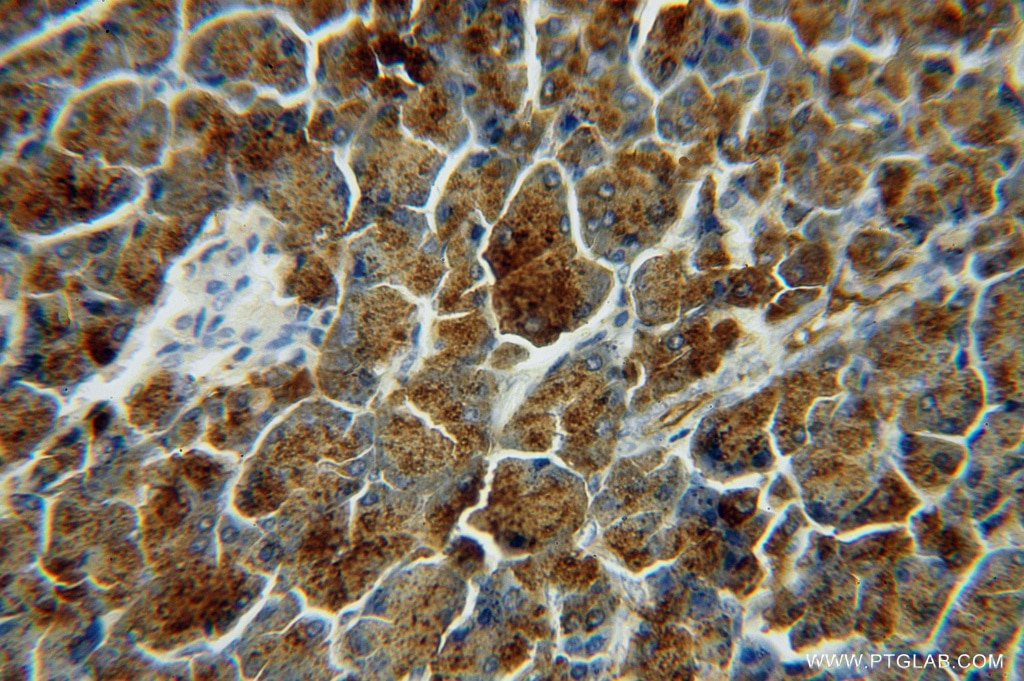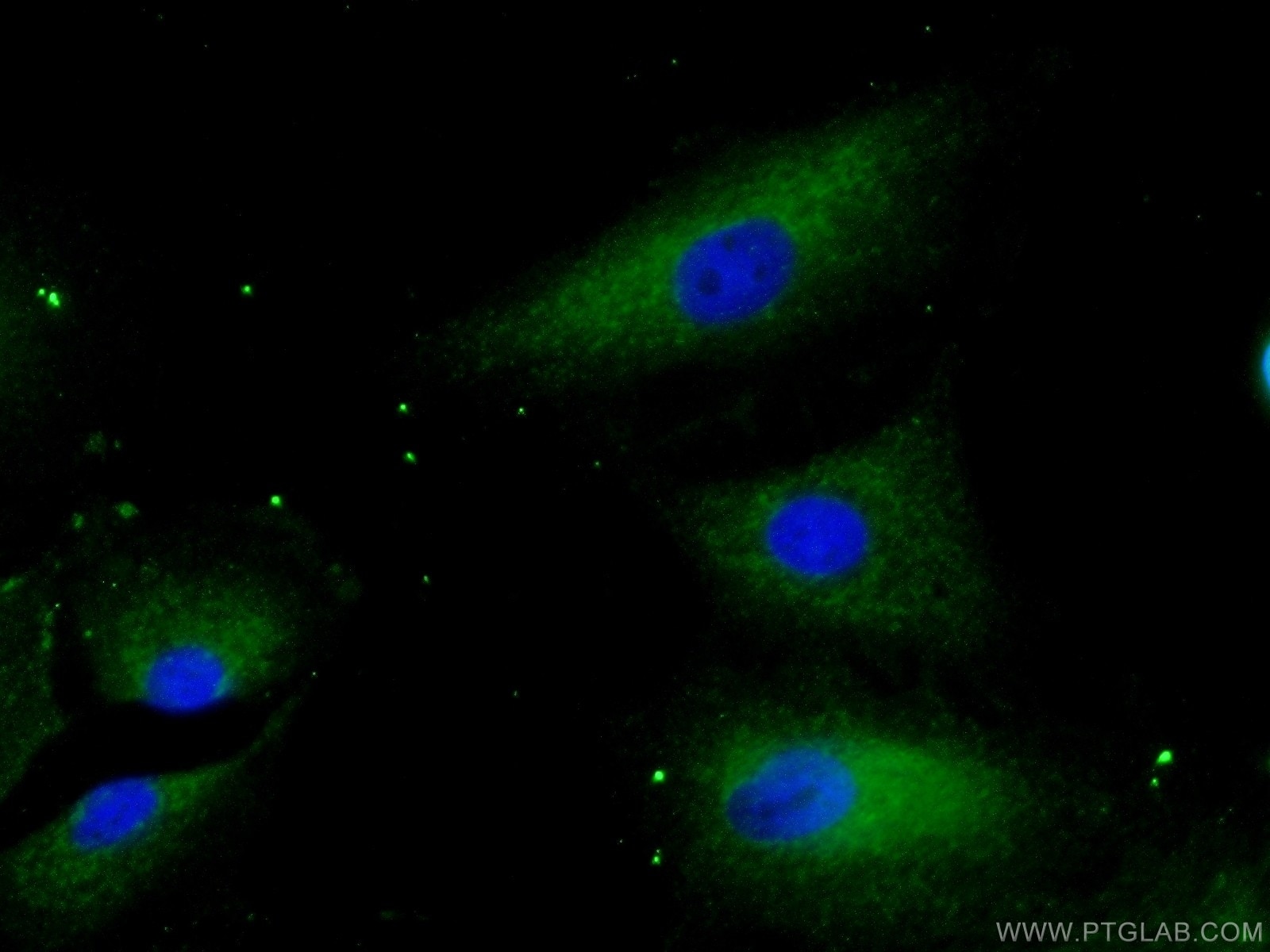- Featured Product
- KD/KO Validated
LIPH Polyklonaler Antikörper
LIPH Polyklonal Antikörper für WB, IHC, IF/ICC, IP, ELISA
Wirt / Isotyp
Kaninchen / IgG
Getestete Reaktivität
human, Maus, Ratte
Anwendung
WB, IHC, IF/ICC, IP, ELISA
Konjugation
Unkonjugiert
Kat-Nr. : 16602-1-AP
Synonyme
Geprüfte Anwendungen
| Erfolgreiche Detektion in WB | A549-Zellen, COLO 320-Zellen, Mauslungengewebe |
| Erfolgreiche IP | Mauslungengewebe |
| Erfolgreiche Detektion in IHC | humanes Pankreasgewebe Hinweis: Antigendemaskierung mit TE-Puffer pH 9,0 empfohlen. (*) Wahlweise kann die Antigendemaskierung auch mit Citratpuffer pH 6,0 erfolgen. |
| Erfolgreiche Detektion in IF/ICC | A549-Zellen |
Empfohlene Verdünnung
| Anwendung | Verdünnung |
|---|---|
| Western Blot (WB) | WB : 1:500-1:1000 |
| Immunpräzipitation (IP) | IP : 0.5-4.0 ug for 1.0-3.0 mg of total protein lysate |
| Immunhistochemie (IHC) | IHC : 1:20-1:200 |
| Immunfluoreszenz (IF)/ICC | IF/ICC : 1:10-1:100 |
| It is recommended that this reagent should be titrated in each testing system to obtain optimal results. | |
| Sample-dependent, check data in validation data gallery | |
Veröffentlichte Anwendungen
| KD/KO | See 1 publications below |
| WB | See 4 publications below |
| IHC | See 5 publications below |
| ELISA | See 1 publications below |
Produktinformation
16602-1-AP bindet in WB, IHC, IF/ICC, IP, ELISA LIPH und zeigt Reaktivität mit human, Maus, Ratten
| Getestete Reaktivität | human, Maus, Ratte |
| In Publikationen genannte Reaktivität | human |
| Wirt / Isotyp | Kaninchen / IgG |
| Klonalität | Polyklonal |
| Typ | Antikörper |
| Immunogen | LIPH fusion protein Ag9775 |
| Vollständiger Name | lipase, member H |
| Berechnetes Molekulargewicht | 51 kDa |
| Beobachtetes Molekulargewicht | 50-55 kDa |
| GenBank-Zugangsnummer | BC064941 |
| Gene symbol | LIPH |
| Gene ID (NCBI) | 200879 |
| Konjugation | Unkonjugiert |
| Form | Liquid |
| Reinigungsmethode | Antigen-Affinitätsreinigung |
| Lagerungspuffer | PBS with 0.02% sodium azide and 50% glycerol |
| Lagerungsbedingungen | Bei -20°C lagern. Nach dem Versand ein Jahr lang stabil Aliquotieren ist bei -20oC Lagerung nicht notwendig. 20ul Größen enthalten 0,1% BSA. |
Hintergrundinformationen
LIPH(Lipase member H) is also named as LPDLR, MPAPLA1, PLA1B. It is a phosphatidic acid-selective phospholipase A1 (PLA1) that produces 2-acyl lysophosphatidic acid (LPA) and belongs to the AB hydrolase superfamily and Lipase family.LIPH has a 12-residue lid region, which likely covers a catalytic pocket, and 4 potential N-linked glycosylation sites. Defects in LIPH are the cause of hypotrichosis type 7 (HYPT7).
Protokolle
| PRODUKTSPEZIFISCHE PROTOKOLLE | |
|---|---|
| WB protocol for LIPH antibody 16602-1-AP | Protokoll herunterladen |
| IHC protocol for LIPH antibody 16602-1-AP | Protokoll herunterladenl |
| IF protocol for LIPH antibody 16602-1-AP | Protokoll herunterladen |
| IP protocol for LIPH antibody 16602-1-AP | Protokoll herunterladen |
| STANDARD-PROTOKOLLE | |
|---|---|
| Klicken Sie hier, um unsere Standardprotokolle anzuzeigen |
Publikationen
| Species | Application | Title |
|---|---|---|
Genet Med Loss-of-function variants in C3ORF52 result in localized autosomal recessive hypotrichosis. | ||
Cell Oncol (Dordr) Genomic analysis and filtration of novel prognostic biomarkers based on metabolic and immune subtypes in pancreatic cancer | ||
J Cell Mol Med LIPH promotes metastasis by enriching stem-like cells in triple-negative breast cancer.
| ||
Tumour Biol Lipase member H is a novel secreted protein associated with a poor prognosis for breast cancer patients. | ||
Biochem Biophys Res Commun Lipase member H is a novel secreted protein selectively upregulated in human lung adenocarcinomas and bronchioloalveolar carcinomas. | ||
Tumour Biol Lipase member H frequently overexpressed in human esophageal adenocarcinomas. |
